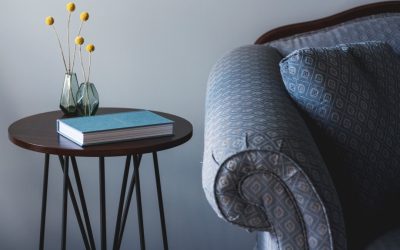5 Essential Things to Start A New Home

Choosing the right home is one of the most important decisions we make in our lives. It is a place where we will create memories, raise our families, and find comfort and security. Planning for a new home involves careful consideration of various factors, from location to budgeting, design trends to home security. By taking the time to research and plan, you can ensure that your new home meets your needs and desires, both now and in the future.
Location, Location, Location: Choosing the Right Spot for Your New Home
When it comes to choosing a location for your new home, there are several factors to consider. First and foremost, you need to think about your lifestyle and what is important to you. Are you looking for a quiet suburban neighborhood or a bustling urban area? Do you want to be close to schools, parks, and amenities? Is proximity to transportation a priority?
Researching the neighborhood and community is crucial in determining if it is the right fit for you. Take the time to visit the area at different times of the day to get a sense of the atmosphere and noise levels. Talk to neighbors and ask about their experiences living in the area. Look into local schools, crime rates, and property values.
Proximity to amenities and transportation is another important consideration. Think about how far you are willing to commute to work or school and whether there are public transportation options available. Consider the availability of grocery stores, restaurants, parks, and other amenities that are important to you.
Budgeting 101: How to Plan Your Finances for a New Home
Planning your finances for a new home involves creating a budget and sticking to it. Start by determining how much you can afford to spend on housing expenses each month. This includes not only your mortgage payment but also property taxes, insurance, utilities, and maintenance costs.
Saving for a down payment and closing costs is another crucial aspect of budgeting for a new home. The larger your down payment, the lower your monthly mortgage payments will be. Aim to save at least 20% of the purchase price for a down payment to avoid private mortgage insurance (PMI).
Understanding the true cost of homeownership is essential to avoid any financial surprises. In addition to the monthly mortgage payment, you will also need to budget for property taxes, homeowners insurance, and maintenance and repair costs. It is important to set aside a portion of your monthly budget for these expenses to ensure that you can afford to keep up with them.
Building vs. Buying: Which Option is Best for You?
When it comes to choosing between building a new home or buying an existing one, there are pros and cons to consider for each option. Building a new home allows you to customize every aspect of the house to your liking. You can choose the layout, finishes, and design elements that suit your taste and lifestyle. However, building a new home can be more expensive and time-consuming than buying an existing one.
Buying an existing home offers the advantage of being able to move in sooner and potentially at a lower cost. You can also see exactly what you are getting before making a purchase. However, you may need to compromise on certain aspects of the house’s design or layout.
When making a decision, consider factors such as your budget, timeline, and personal preferences. If customization and having full control over the design are important to you, building a new home may be the best option. If you are looking for a quicker and potentially more affordable option, buying an existing home may be the way to go.
Home Design Trends: What’s In and What’s Out in 2024
Home design trends are constantly evolving, and it is important to stay up-to-date if you want your new home to feel modern and stylish. In 2024, some popular design trends include open floor plans, natural materials, and neutral color palettes. Open floor plans create a sense of spaciousness and allow for better flow between rooms. Natural materials such as wood, stone, and metal add warmth and texture to a space. Neutral color palettes, including shades of white, gray, and beige, create a calming and timeless atmosphere.
On the other hand, there are some outdated design elements that you may want to avoid in your new home. These include popcorn ceilings, wall-to-wall carpeting, and outdated fixtures. Popcorn ceilings can make a space feel dated and are difficult to clean. Wall-to-wall carpeting is less popular nowadays due to its maintenance requirements and potential for allergens. Outdated fixtures, such as brass or gold finishes, can also make a space feel old-fashioned.
Incorporating your personal style into home design is important to make your new home feel like your own. Consider your preferences in terms of colors, patterns, and furniture styles. Don’t be afraid to mix and match different elements to create a unique and personalized space.
The Importance of Home Security: Protecting Your Investment

Protecting your investment is crucial when it comes to homeownership. Home security systems can provide peace of mind by deterring burglars and intruders. There are various types of home security systems available, including alarm systems, surveillance cameras, and smart home technology.
Securing doors and windows is another important aspect of home security. Install deadbolt locks on all exterior doors and consider reinforcing them with strike plates. Install window locks or consider adding security film to windows to make them more resistant to break-ins.
In addition to these measures, there are several tips you can follow to deter burglars and intruders. Keep your property well-lit at night with outdoor lighting. Trim shrubs and trees near windows to eliminate hiding spots. Install motion sensor lights and consider using timers to make it appear as if someone is home when you are away.
Energy Efficiency: How to Save Money and the Environment
Energy efficiency is not only good for the environment but also for your wallet. Energy-efficient homes can help reduce your energy consumption and lower your utility bills. There are several tips you can follow to improve energy efficiency in your new home.
Start by ensuring that your home is well-insulated. Proper insulation can help keep your home warm in the winter and cool in the summer, reducing the need for heating and cooling systems. Consider adding insulation to walls, attics, and basements.
Upgrade to energy-efficient appliances and lighting fixtures. Look for appliances with the Energy Star label, which indicates that they meet strict energy efficiency guidelines. Replace traditional incandescent light bulbs with LED bulbs, which use less energy and last longer.
There are also cost-effective ways to make your home more eco-friendly. Planting trees and shrubs around your property can provide shade in the summer and act as a windbreak in the winter, reducing the need for heating and cooling. Install a programmable thermostat to automatically adjust the temperature when you are away or asleep.
Furniture and Decor: Making Your House a Home
Choosing furniture and decor is an exciting part of making your new house feel like a home. When choosing furniture, consider both style and functionality. Look for pieces that fit your personal style and complement the overall design of your home. However, don’t forget to consider how you will use the space and whether the furniture meets your needs in terms of comfort and practicality.
Incorporating your personal style into home decor is important to make your new home feel like your own. Consider your preferences in terms of colors, patterns, and textures. Mix different elements to create a unique and personalized space. Don’t be afraid to experiment with different styles and take inspiration from magazines, websites, and social media platforms.
Decorating your home doesn’t have to break the bank. There are several budget-friendly ways to decorate your new home. Consider shopping at thrift stores, flea markets, and online marketplaces for unique and affordable pieces. DIY projects can also be a fun and cost-effective way to add personal touches to your home.
Landscaping and Outdoor Living: Maximizing Your Property’s Potential
Curb appeal is important when it comes to making a good first impression and maximizing your property’s potential. Landscaping plays a crucial role in creating an inviting and beautiful yard. Start by cleaning up any debris or overgrown plants. Trim trees and shrubs to create a neat and well-maintained appearance.
Consider adding flowers, plants, and trees to add color and texture to your yard. Choose plants that are suitable for your climate and require minimal maintenance. Add mulch or gravel to flower beds to prevent weed growth and retain moisture.
Creating outdoor living spaces is another way to maximize your property’s potential. Consider adding a patio or deck where you can relax and entertain guests. Invest in comfortable outdoor furniture and consider adding features such as a fire pit or outdoor kitchen.
Maintenance and Repairs: Keeping Your Home in Top Shape
Regular maintenance is essential for keeping your home in top shape and preventing costly repairs down the line. Create a maintenance schedule and stick to it. This includes tasks such as cleaning gutters, inspecting the roof, checking for leaks, and servicing HVAC systems.
When it comes to repairs, you may need to decide whether to tackle them yourself or hire a professional. DIY repairs can save you money but may not always be the best option, especially for complex or dangerous tasks. Consider your skills, knowledge, and comfort level before attempting any repairs yourself.
Tips for keeping your home in good condition include addressing issues promptly, staying on top of routine maintenance tasks, and investing in quality materials and craftsmanship. Regularly inspect your home for signs of damage or wear and tear, and address any issues as soon as possible to prevent further damage.
Moving Day: Tips for a Smooth Transition to Your New Home
Moving day can be stressful, but with proper planning, you can ensure a smooth transition to your new home. Start by creating a moving checklist and timeline. This will help you stay organized and ensure that you don’t forget any important tasks.
Decide whether to hire professional movers or do it yourself. Hiring professional movers can save you time and effort, but it comes at a cost. If you choose to move yourself, enlist the help of friends and family and rent a moving truck if necessary.
Tips for unpacking and settling into your new home include unpacking essentials first, setting up essential services such as utilities and internet, and taking the time to explore your new neighborhood. Unpack room by room, starting with the most important areas such as the kitchen and bedrooms.
Choosing the right home and planning for it is a process that requires careful consideration of various factors. From choosing the right location to budgeting for your new home, considering design trends to ensuring home security, there are many aspects to consider. By taking the time to research and plan, you can ensure that your new home meets your needs and desires, both now and in the future. So start planning today and make your dream home a reality.
If you’re starting a new home, it’s important to consider all aspects of your life, including your career and finances. In fact, understanding the salary potential in different fields can greatly impact your decision-making process. For those interested in the medical field, an article on Bahsegelirmisin.com explores the X-ray tech salary in Colorado. This informative piece provides valuable insights into the earning potential of X-ray technicians in this particular state. By understanding the salary range, you can make informed decisions about your career path and financial goals.
FAQs
What are the five essential things to start a new home?
The five essential things to start a new home are furniture, appliances, kitchenware, bedding, and cleaning supplies.
What kind of furniture should I buy for my new home?
The furniture you should buy for your new home depends on your personal style and needs. Some essential pieces include a bed, sofa, dining table, and chairs.
What appliances should I purchase for my new home?
The appliances you should purchase for your new home include a refrigerator, stove, microwave, dishwasher, and washing machine.
What kitchenware should I have in my new home?
The kitchenware you should have in your new home includes pots and pans, utensils, dishes, glasses, and silverware.
What kind of bedding should I buy for my new home?
The bedding you should buy for your new home includes sheets, pillows, comforters, and blankets.
What cleaning supplies should I have in my new home?
The cleaning supplies you should have in your new home include a broom, mop, vacuum cleaner, cleaning solutions, and sponges.








